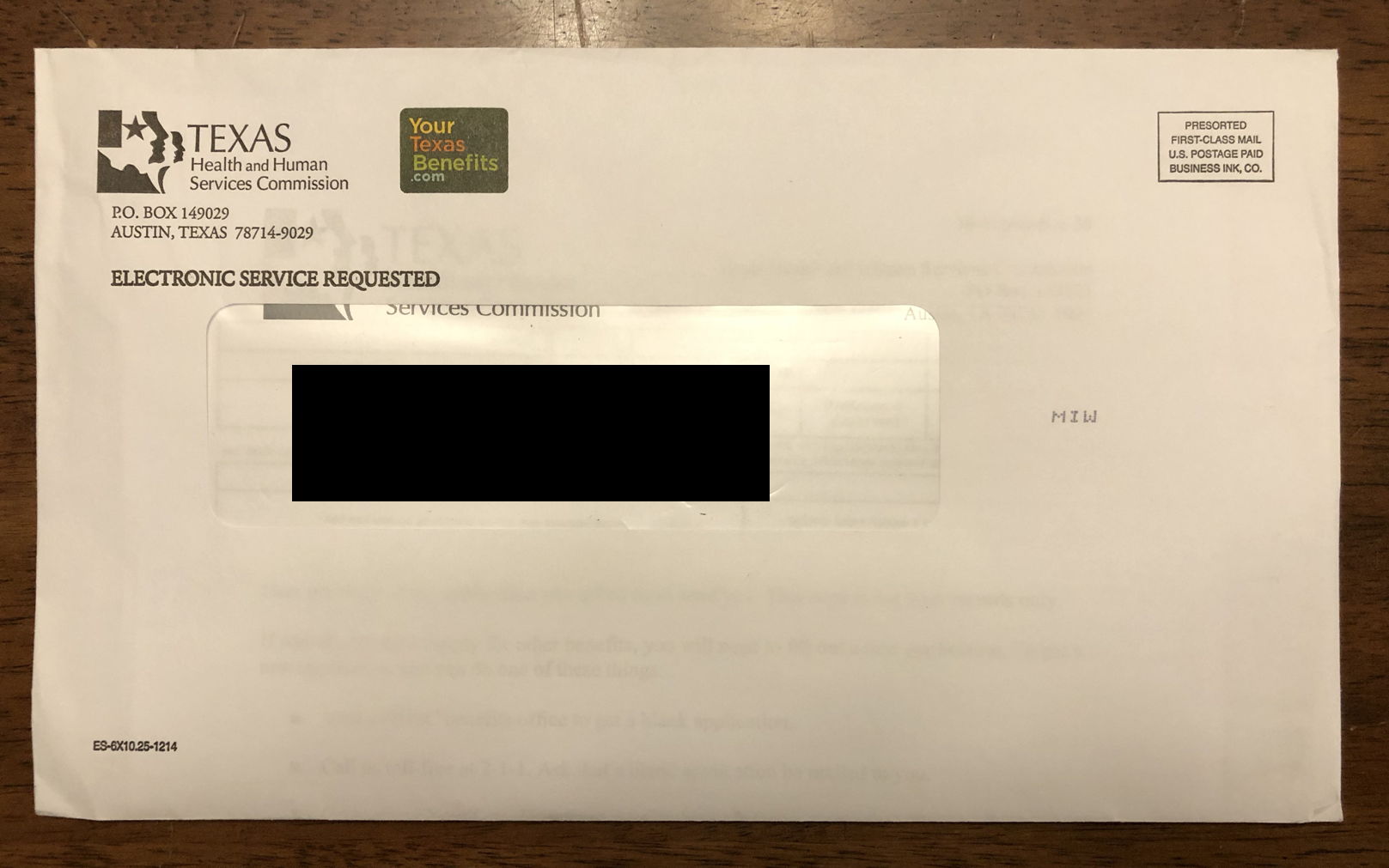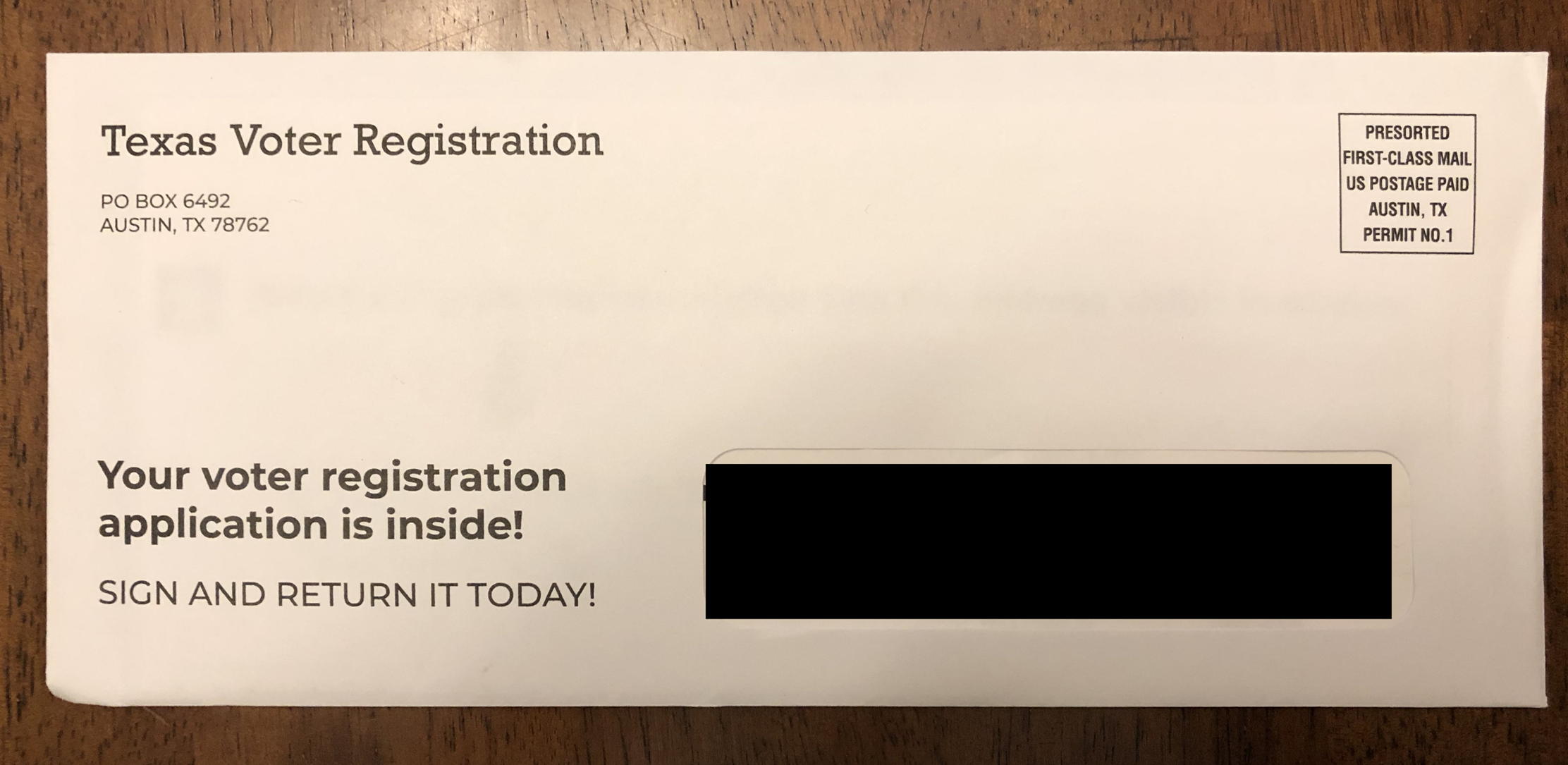The Post Office is not designed for universal mail-in ballots

Universal mail-in ballots introduce serious problems with security, reliability, and confidentiality that the United States Postal Service is not designed to handle.
Having really old mail be delivered after decades is not as uncommon as it ought to be, but it’s still ironic enough that a postcard from a hundred years ago just got delivered in Michigan, a battleground state—just as judges have started rewriting election law to allow late entries.
Apparently they’re not going far enough. We should continue accepting ballots for one hundred years after election day.
With my favorite annual book sales closing down due to lockdowns, I’ve been buying more books online at AbeBooks and eBay. And so I’ve been paying more attention to the USPS Informed Delivery notices. The behavior of their tracking system doesn’t inspire confidence. Several times I’ve seen a book leave a particular post office, not show up anywhere for several days, and then leave that same post office again several days later. The original leave time disappears, to be replaced with the new leave time. That is, a package that is marked as having left a particular post office at time x will later change to have left at time y a few to several days later with no indication of what happened to previous time x. The earlier time is erased from the system.
That’s not how tracking systems are supposed to work.
Then there are the packages that come reasonably quickly to my local post office… and then go to a city north of me and then to a city south of me before circling back to my local post office again.
There’s a dark joke going around about how you wouldn’t trust the Post Office with your winning lottery ticket, so how can you trust it with your vote? Sadly, some people do trust the Post Office with their lottery tickets, and lose their winnings.
Mail-in ballots multiply the potential for harm through both fraud and error. A few days ago I received the two letters pictured in this post. They weren’t addressed to me; the address was a neighbor’s address. The “voter registration” mail is probably junk mail, but the other mail appears to be real.
And it turns out, that latter mail was not only mis-delivered, it was mis-addressed. The recipient isn’t at the address the government has for them.
I also just yesterday received a mail for someone who hasn’t lived here in half a decade. They changed their address, but at some point in the last billing period someone at TxTag must have re-entered their name and shifted the first name into the last name, the middle name into the first name, and the last name into the middle name—bypassing the change of address? That’s a guess, and probably not a good one. But official government mail came here after years of not coming here, without the knowledge of the intended recipient.
Universal mail-in voting means that any discrepancy in voter rolls becomes not just a potential fraud, but an easy fraud. Every mailed out ballot that goes to an undeliverable address, to a dead person, to someone who has moved out of that address, is an opportunity for fraud. And it’s an opportunity for fraud that doesn’t require a conspiracy of multiple people, which means it’s much harder to detect. One corrupt postal worker is all it takes to collect all of the ballots on their route that no one will notice missing, and cast them fraudulently. And there are millions of such ballots every year.

Without the security of in-person ballots, entire localities can be targeted for having their votes simply tossed, by a single person. That person could be within the postal service, among those accepting mailed-in ballots, or simply someone simply trolling the neighborhood mailboxes and drop boxes. Many localities go reliably for a particular candidate, making that locality easily targeted for fraud.1 It isn’t difficult to guess that all ballots from, say, the military, are for a particular candidate.
As may have happened in Luzerne County, Pennsylvania.
I’m seeing a lot of people trying to claim that these discarded ballots are not evidence of a problem by saying that of the nine discarded ballots, seven were for Trump and two for Biden. But the actual facts seem to be that seven were for Trump and two were resealed by the Luzerne County elections staff and brought back into the system. Unless Luzerne County resealed and kept only the Biden ballots, we don’t know who those two ballots were for. Odds are that, absent pure fraud by the elections staff, one and probably both were for Trump. We know that at least 77.8%—seven in nine—of those ballots are for Trump. Just guessing would say that at least one of the remaining ballots was for Trump, and a slightly higher than 50% chance that the second also went for Trump.
In fact, though, the assumption of fraud is probably more likely. Someone discarded the ballots they didn’t like and kept the ones they did. That’s another problem with mail-in ballots. They play hell not just with ballot integrity but with ballot privacy.
The same could happen for any precinct that has a predictable voting pattern. Any such precinct can easily be targeted for fraud by any one of the hundreds or thousands of people with access to the delivery chain between the voter and the vote counters. Votes can be discarded to reduce the influence of the precinct, they can be changed, they can even be made public to enable harassment and keep undesirable votes from being cast in the future elections.
Secure elections require knowing that the person voting is the person they claim to be; they require ensuring that a vote is transferred from the voter to the vote counter reliably and without alteration; and they require that individual votes remain secret to avoid interference by threat or undue influence.
These are not problems that can be solved by the United States Postal Service without completely tearing down and rebuilding how they handle mail. It would also require completely tearing down and rebuilding how government entities maintain voter rolls, something county clerks and state election departments almost uniformly oppose. Too many politicians oppose even the most basic ballot integrity laws, even to the point of fighting voter ID laws that ensure that the person casting a vote is the person they say they are.
Until those problems are solved, universal remote voting will only be a mess of fraudulent votes, fraudulent counting, and fraudulent delivery. And even when we do solve the problem of universal remote voting, the postal service is not going to be the solution. It is neither secure nor reliable enough to safely handle a hundred million votes. Even if we were willing to wait a century to close each election.
In response to 2020 in Photos: For photos, memes, and perhaps other quick notes sent from my mobile device or written on the fly during 2020.
This is one of the reasons why early voting is a bad idea as well, at least from the standpoint of election integrity: both corrupt insiders and fraudulent outsiders watching early votes come in don’t have to know specifically how an individual voted to know how much fraud they’ll need to resort to, to overcome or augment that community’s vote.
↑
- Federal Data: 28.4M Mail-In Ballots Have Gone Missing Since 2012 Election: John Binder at Breitbart
- “For the 2014 election cycle, the number of mail-in ballots that went missing spiked to more than eight million. In that election, 29.2 million mail-in ballots were sent to registered voters. More than 610,000 of those mail-in ballots were undeliverable, and about 269,000 were rejected. Another 8.2 million of those mail-in ballots went missing.”
- Florida woman told to forfeit Second Chance Lottery prize after USPS loses certified mail with ticket inside: Shannon Behnken
- “That’s because the U.S. Postal Service did not deliver the ticket to lottery headquarters in Tallahassee, even though Burgess sent the package through certified mail.”
- Local press runs interference on voter fraud in Minnesota: John Hinderaker at Power Line
- “But last night’s video is damning enough; it shows a Democratic Party operative crowing over the 300 open absentee ballots in his truck. That is illegal and, obviously, evidence of voter fraud.”
- Mail found in ditch in Greenville
- “The Outagamie County Sheriff’s Office says three trays were found in a ditch around 8 a.m. Monday. The trays were near the intersection of highways 96 and [Country Road] CB, near the Appleton International Airport.”
- Statement Of U.S. Attorney Freed On Inquiry Into Reports Of Potential Issues With Mail-In Ballots at United States Department of Justice
- “…we can confirm that a small number of military ballots were discarded. Investigators have recovered nine ballots at this time… Of the nine ballots that were discarded and then recovered, 7 were cast for presidential candidate Donald Trump. Two of the discarded ballots had been resealed inside their appropriate envelopes by Luzerne elections staff prior to recovery by the FBI and the contents of those 2 ballots are unknown.” (Hat tip to Matt Margolis at PJ Media)
- Super-efficient USPS delivers a letter in Michigan 100 years after it was mailed: Joel Abbott at Not the Bee
- “In a timely display of their renowned efficiency and speed, the USPS finally delivered a 100-year-old letter to Brittany Keech of Belding, Michigan.”
More mail-in ballots
- Bean counting and ballot counting
- We treat money far more seriously than we treat the future of our country.
More United States Postal Service
- The Radio Shack Postal Service
- What if Radio Shack had been granted a monopoly on computers in 1981? They’d probably look a lot like the United States Postal Service.
- Break up the Postal AT&T
- We have no idea what we’re missing by barring competition to the United States Postal Service. We’re in the position we were in 1980 when proponents of government monopolies were warning us of the horrors of ending the AT&T telephone monopoly.
More vote fraud
- Who is Trump running against?
- If Trump runs against Biden, he’ll lose, just like he did in 2020: by getting more votes but fewer ballots. It looks like Trump understands that. He’s not running against Biden. He’s running against the Democrats and Republicans who put Biden in power.
- Bean counting and ballot counting
- We treat money far more seriously than we treat the future of our country.
- 2020: The Dark Joke Returns
- It’s long past time to do something about the dark jokes we make about corruption among the beltway class.
- The Silver Blaze Media and the Gaslight Election
- This isn’t just the Gaslight election, it’s the Silver Blaze election.
- Support the freedom to vote as you wish
- The Reader is proud to offer space for this guest editorial to the American Civil Liberties Union. We prove our independence whenever we align with similar political interests.
- Three more pages with the topic vote fraud, and other related pages
